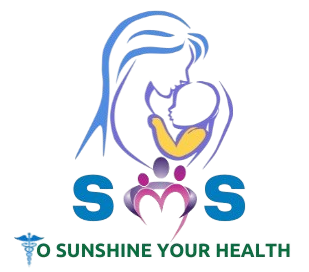Abortion services
Abortion services
Abortion services refer to medical procedures that terminate a pregnancy. These services are provided to individuals who may choose to end a pregnancy for various reasons, including health concerns, personal circumstances, or financial situations. The availability and legality of abortion services vary widely depending on the country, state, or region, as laws around abortion differ based on local regulations and societal views.
Types of Abortion Procedures
There are two primary types of abortion procedures: medication abortion and surgical abortion.
- Medication Abortion
Medication abortion involves the use of drugs to end a pregnancy. It is most commonly used during the early stages of pregnancy (usually up to 10 weeks gestation).- Mifepristone and Misoprostol:
- How it works: The most common medication regimen involves taking two drugs: Mifepristone (often called the abortion pill) and Misoprostol.
- Mifepristone: This pill is taken first and works by blocking the hormone progesterone, which is needed to maintain the pregnancy.
- Misoprostol: This is taken 24 to 48 hours later and causes the uterus to contract and expel the pregnancy.
- Effectiveness: When used as directed, medication abortion is about 95-98% effective in ending a pregnancy.
- Process: The process can be completed at home, though it’s recommended to have follow-up care with a healthcare provider to confirm that the abortion is complete.
- Availability: Medication abortion is typically available at clinics or through telemedicine in some places, depending on the legal and regulatory environment.
- Mifepristone and Misoprostol:
- Surgical Abortion
Surgical abortion procedures are typically performed by a healthcare provider in a clinic or medical setting. Surgical abortion is used later in pregnancy, but can also be an option earlier in pregnancy depending on circumstances.- Aspiration (Suction) Abortion:
- How it works: A suction device is used to remove the pregnancy from the uterus. This procedure is generally performed up to 12-14 weeks of pregnancy.
- Effectiveness: Aspiration abortion is highly effective, with a success rate of 99% when done early in pregnancy.
- Process: The procedure typically takes only 10-15 minutes, and local anesthesia or sedation is used to manage discomfort.
- Dilation and Curettage (D&C):
- How it works: A D&C involves dilating the cervix and using surgical instruments to remove the pregnancy tissue. It may be done for miscarriage management or for elective abortion.
- Availability: D&C may be recommended in certain medical situations, typically after the first trimester (up to 14-16 weeks).
- Dilation and Evacuation (D&E):
- How it works: D&E is typically performed later in pregnancy (usually after 15 weeks) and involves dilation of the cervix, followed by the use of surgical instruments to remove the pregnancy.
- Effectiveness: This procedure is highly effective but requires more advanced techniques and specialized care.
- Aspiration (Suction) Abortion:
Factors Affecting Abortion Services
The availability of abortion services depends on several factors, including:
- Gestational Age: Laws in many places restrict the availability of abortion based on how far along the pregnancy is. The earlier the abortion is performed, the safer and simpler the procedure.
- Legal Restrictions: Abortion laws differ significantly by country, state, or region. Some areas may allow abortion up to a certain number of weeks, while others may have more restrictive laws or outright bans.
- Access to Healthcare Providers: In some areas, access to trained healthcare providers who can perform abortions may be limited due to local regulations, medical infrastructure, or shortages of providers.
- Insurance Coverage: In many places, abortion services may not be covered by insurance or may require additional payment. Availability of financial assistance varies.
Risks and Considerations
While abortion is generally safe when performed by qualified healthcare providers, there are some potential risks associated with both medication and surgical procedures, including:
- Infection: In rare cases, infection can occur if proper medical care is not followed.
- Heavy Bleeding: Some bleeding is common after an abortion, but in rare cases, excessive bleeding may require medical attention.
- Emotional Impact: The emotional response to an abortion can vary. Some people may feel relief, while others may experience sadness, guilt, or regret. Counseling and support services can help individuals process their feelings after the procedure.
- Future Fertility: Both medication and surgical abortions are generally safe and do not affect future fertility. However, there is a small risk of complications that could affect reproductive health if not properly managed.
Support and Counseling
Many individuals seeking an abortion may benefit from counseling or support services, especially if the decision is difficult or if they experience emotional distress afterward. Various organizations offer counseling, including reproductive health clinics, mental health professionals, and support groups.
Where to Access Abortion Services
In many places, abortion services are provided at:
- Planned Parenthood Clinics or other reproductive health clinics.
- Private Medical Clinics or specialized abortion providers.
- Hospitals (especially for later-term abortions or complicated cases).
Conclusion
Abortion services offer individuals the ability to make decisions about their reproductive health. Access to safe and legal abortion is an important part of healthcare, and the decision to seek abortion services should be made with careful consideration, consultation with a healthcare provider, and support from trusted resources.
Need a Solution?
For unplanned pregnancy plans Contact Us

